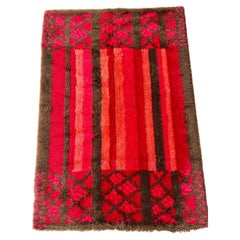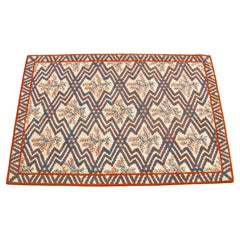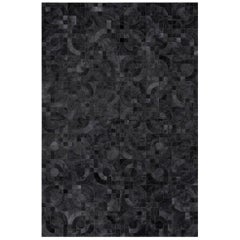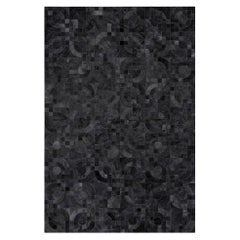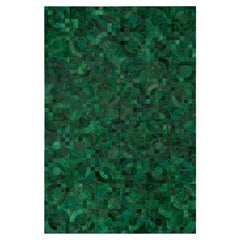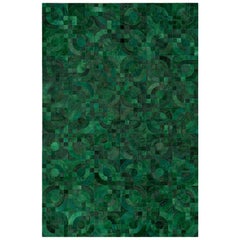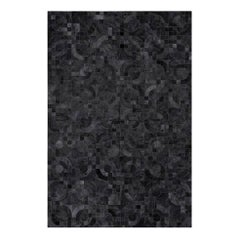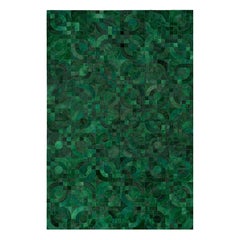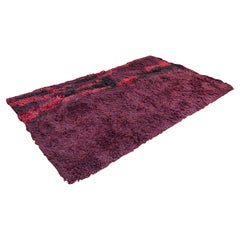1970s Area Rugs
20th Century Danish Scandinavian Modern Russian and Scandinavian Rugs
Wool
Mid-20th Century North American Post-Modern More Carpets
Wool, Synthetic
21st Century and Contemporary Pakistani Art Deco More Carpets
Cowhide
21st Century and Contemporary Pakistani Art Deco More Carpets
Cowhide
21st Century and Contemporary Pakistani Art Deco More Carpets
Cowhide
21st Century and Contemporary Pakistani Art Deco More Carpets
Cowhide
21st Century and Contemporary Pakistani Art Deco More Carpets
Cowhide
21st Century and Contemporary Pakistani Modern More Carpets
Cowhide
Vintage 1970s American Modern Caucasian Rugs
Wool
21st Century and Contemporary Pakistani Art Deco More Carpets
Cowhide
21st Century and Contemporary Pakistani Art Deco More Carpets
Cowhide
Vintage 1970s Azerbaijani Kazak Turkish Rugs
Wool
Mid-20th Century Persian Persian Rugs
Wool
Late 20th Century Persian Khorassan Persian Rugs
Wool
Late 20th Century Persian Persian Rugs
Wool
Vintage 1970s American Modern Caucasian Rugs
Wool
Mid-20th Century Greek Mid-Century Modern More Carpets
Wool
Mid-20th Century American Caucasian Rugs
Cowhide
Vintage 1970s Turkish Oushak Turkish Rugs
Wool
Vintage 1970s Mid-Century Modern More Carpets
Wool
Vintage 1970s Moroccan Mid-Century Modern Moroccan and North African Rugs
Natural Fiber
Vintage 1970s Persian Other Persian Rugs
Silk
Vintage 1970s Chinese Sumak Chinese and East Asian Rugs
Wool
Vintage 1970s Mid-Century Modern North and South American Rugs
Vintage 1970s English Mid-Century Modern Western European Rugs
Wool
Vintage 1970s Moroccan Mid-Century Modern Moroccan and North African Rugs
Wool
Vintage 1970s Moroccan Mid-Century Modern Moroccan and North African Rugs
Wool
Vintage 1970s American Mid-Century Modern North and South American Rugs
Wool
Vintage 1970s American Mid-Century Modern North and South American Rugs
Vintage 1970s American Mid-Century Modern North and South American Rugs
Natural Fiber
Vintage 1970s American Mid-Century Modern North and South American Rugs
Wool
Vintage 1960s Scandinavian Mid-Century Modern Russian and Scandinavian Rugs
Vintage 1970s Mid-Century Modern North and South American Rugs
Natural Fiber
Mid-20th Century American Mid-Century Modern North and South American Rugs
Wool
Vintage 1970s North and South American Rugs
Wool
Vintage 1970s French Mid-Century Modern Western European Rugs
Wool
Vintage 1970s American More Carpets
Mid-20th Century American Mid-Century Modern North and South American Rugs
Wool
Vintage 1970s Swedish Scandinavian Modern Russian and Scandinavian Rugs
Wool
1970s Area Rugs For Sale on 1stDibs
How Much are 1970s Area Rugs?
Finding the Right Rugs-carpets for You
Good antique rugs and vintage rugs have made their way into homes across the globe, becoming fixtures used for comfort, prayer and self-expression, so choosing the right area rug is officially a universal endeavor.
In modern usage, “carpet” typically denotes a wall-to-wall floor cushioning that is fixed to the floor. Rugs, on the other hand, are designed to cover a specific area and can easily be moved to new locations. However, the terms are interchangeable in many parts of the world, and, in the end, it won’t matter what you decide to call it.
It’s well known that a timeless Persian rug or vintage Turkish rug can warm any interior, but there are lots of other styles of antique rugs to choose from when you're endeavoring to introduce fresh colors and textures to a bedroom or living room.
Moroccan Berber rugs are not all about pattern. In fact, some of the most striking examples are nearly monochrome. But what these rugs lack in complexity, they make up for in brilliant color and subtle variation. Moroccan-style interiors can be mesmerizing — a sitting room of this type might feature a Moroccan rug, carved wooden screens and a tapestry hung behind the sofa.
Handwoven kilim rugs, known for their wealth of rich colors and unique weaving tradition, are pileless: Whereas the Beni Ourain rugs of Morocco can be described as dense with a thick surface or pile, an authentic kilim rug is thin and flat. (The term “kilim” is Turkish in origin, but this type of textile artistry is practiced all across the Balkans, throughout the Arab world and elsewhere.)
When it comes to eye-catching floor coverings, the distinctive “medallion” pattern of Oushak rugs has two types of rounded shapes alternating against a rich red or blue background created with natural dyes, while the elaborate “star” pattern involves large eight-pointed shapes in diagonal rows alternating with diamonds.
If you’re looking for something unexpected, find a runner rug that pops in your hallway or on your stairs. Dig for dazzling geometric patterns in our inventory of mid-century modern rugs and carpets, which includes works designed by the likes of Swedish textile masters Märta Måås-Fjetterström, Marianne Richter and other artisans.
Carpets and rugs have been around for thousands of years. Prehistoric humans turned to animal skin, wool and fur to craft simple fabrics to soften hard terrain. A 2016 study suggests that "cave lions" were hunted for exactly this purpose, and that decorating your cave with their pelts may have conferred strength and prestige. Although many of these early textiles are still in existence, tracing their precise origins is difficult. Carpets quickly became such a valuable trade commodity that the weavings could easily travel far from their places of origin.
The oldest known carpet was found in southern Siberia. (It may have traveled there from Persepolis in Iran.) For the flat-weave floor rugs crafted by Native Americans, cotton was the primary material before sheep’s wool was introduced in the 16th century. In Europe, carpet-making was fundamental to folk art, and Asian carpets imported to European countries were at one time considered a precious luxury and not intended to remain permanently on the floor.
With the variety of area rugs and carpets rolled out for you on 1stDibs — a collection that includes traditional, modern, minimalist rugs and other coverings of all kinds — things will be looking up whenever you’re looking down.
 NazmiyalMarch 23, 2021That depends on what you would like to have in the room.
NazmiyalMarch 23, 2021That depends on what you would like to have in the room.- 1stDibs ExpertOctober 12, 2021The best material for an area rug has to be wool (even though synthetic materials may be a better fit with respect to budget). Woolen rugs are resilient, long-lasting and can be a vibrant addition to any room. Find a collection of antique and vintage woolen rugs on 1stDibs today.
- 1stDibs ExpertAugust 26, 2024The difference between an area rug and a carpet is installation. Carpet is a soft floor covering installed on a floor with glue, nails or other fasteners. An area rug is a removable floor covering. On 1stDibs, shop a wide variety of area rugs.
- What are standard area rug sizes?2 Answers
 NazmiyalMarch 23, 2021Take this with a gain of salt but usually: 3x5 4x6 5x7 / 5x8 6x9 8x10 9x12 10x14 12x15 12x181stDibs ExpertAugust 17, 2021Standard rug sizes include 3'x5′, 5'x8', 8'x10′, 9'x12′ and 12'x15′. There’s no one standard size because the ideal size for a rug should be proportionate to the space in which it’s going.
NazmiyalMarch 23, 2021Take this with a gain of salt but usually: 3x5 4x6 5x7 / 5x8 6x9 8x10 9x12 10x14 12x15 12x181stDibs ExpertAugust 17, 2021Standard rug sizes include 3'x5′, 5'x8', 8'x10′, 9'x12′ and 12'x15′. There’s no one standard size because the ideal size for a rug should be proportionate to the space in which it’s going. - What was worn in the 1970s?1 Answer1stDibs ExpertFebruary 22, 2021Fashion during the 1970s included lots of T-shirts, cardigans, kimonos, graphic tees, jeans, khakis, and vintage clothes. In the mid-1970s, other fashion highlights included puffy skirts and shirts with flowy sleeves.
- 1stDibs ExpertFebruary 22, 2021When it comes to pile-height for area rugs, that's totally your preferences. Most area rugs don't come with a pile height of more than three-quarters of an inch. However, shag rugs or plush rugs can be quite high. It's totally up to you. The higher the pile-height, the more plush the rug typically is.
- 1stDibs ExpertApril 5, 2022Yes, sequins were indeed popular in the 1970s and could be seen on the dancefloors and discos of the time, along with other popular fabrics like velvet and satin. Sequins and hot pants were the go-to outfit of the disco-glam decade. Shop iconic vintage and contemporary sequin clothing from some of the world’s top boutiques on 1stDibs.
- Was velvet used in the 1970s?1 Answer1stDibs ExpertJune 15, 2023Yes, velvet was used in the 1970s. Fashion designers used the fabric to produce dresses, bell bottoms, flowy kimonos and other pieces. Furniture makers often used it as the upholstery on sofas and armchairs. On 1stDibs, shop a variety of pieces from the 1970s.
- Are the 1970s mid-century?1 Answer1stDibs ExpertFebruary 17, 2023No, the 1970s are generally not considered to fall within the era identified as mid-century. With respect to mid-century modern design, while there is some debate between collectors and design experts about the specific time period that saw the emergence of the style, most furniture enthusiasts agree that by the late 1960s, interest in MCM had largely declined. Writer Cara Greenberg, who coined the term “mid-century modernism,” suggests that “the period from the end of World War II to 1960 – from V-J Day to JFK – was the heyday of innovative furniture design in America.” Mid-century modern furniture is characterized by clean lines and inviting, organic shapes. Furniture makers of the era believed that good design was an essential part of good living. Find a variety of vintage mid-century modern furniture and decorative objects on 1stDibs.
- What is 1970s furniture called?1 Answer1stDibs ExpertMarch 15, 2024What 1970s furniture is called varies. Generally, you may see pieces produced during the decade classified as "vintage" or "retro" furniture. During the 1970s, some makers continued to produce furniture that boasted the characteristics of mid-century modern works. The disco era yielded furnishings with organic, often rounded shapes, unadorned silhouettes, clean lines and a mix of materials. The showy leather furniture of the 1970s, which was both sexy and comfortable, is seeing a resurgence in today’s homes. Shop a wide variety of vintage 1970s furniture on 1stDibs.
- 1stDibs ExpertFebruary 22, 2021Some of the most durable rugs for high traffic areas are Wool, Nylon, Jute, and Polypropylene. Each has different benefits, including durability, ease to clean and inexpensive price.
- 1stDibs ExpertApril 5, 2022To tell if a dress is from the 1960s or 1970s, first look for a label. You may be able to determine the approximate date of the dress simply by researching the designer using reputable online sources. Also, check the zippers. Dresses from the 1960s will usually have metal or nylon zippers. Ones from the 1970s are more likely to be plastic. You'll find a large selection of vintage dresses on 1stDibs.
- 1stDibs ExpertApril 5, 2022Go-go boots were fashionable in the late 1960s through the 1970s. A calf-length to knee-length boot became synonymous with 1960s and 1970s fashion and is still highly coveted today by fashion enthusiasts. Shop a wide range of vintage go-go boots on 1stDibs.
- 1stDibs ExpertMay 5, 2023Which clothing style was most popular in the discos in the 1970s is open to debate. Some of the trends of the discotheque scene included sleeveless, sequined tops paired with bell bottoms and knee-length halter dresses topped off with tall go-go boots. For men, jumpsuits and leisure suits were the favorite looks. Both men and women often wore shoes with chunky heels and thick platforms. On 1stDibs, find an assortment of 1970s vintage clothing and accessories.
- 1stDibs ExpertJanuary 27, 2025The designer who became famous with her wrap dresses in the 1970s is Diane von Furstenberg. She debuted her first example in 1974. When creating the Wrap dress, von Furstenberg drew inspiration from the skirts worn by ballerinas. In celebration of the 40th anniversary of the now-iconic dress, an exhibit called Diane von Furstenberg: Journey of a Dress was held at museums in the United States and abroad. On 1stDibs, explore a range of Diane von Furstenberg apparel and accessories.
- 1stDibs ExpertApril 5, 2022After the success of his “Sol” series in the 1960s, Richard Anuszkiewicz began to focus on his “Centered Square” designs in the mid-1970s. He used interacting colors to change the perception of the art in the eye of the viewer. You can shop a selection of Richard Anuszkiewicz pieces from some of the world’s top art dealers on 1stDibs.
Read More
Hechizoo’s Original Sin Rug Tempts with Shimmering Copper, Tin and Bronze
Embroidered with snakes, turtles, birds and vines, it celebrates a dazzling natural world before the arrival of Adam and Eve.
Splashy Blooms Bud and Wilt in Artist Santi Moix’s Floral Rug
The colorful design captures the natural splendor of a backyard garden.
In South Africa, Rich Mnisi Is Taking Biomorphic Design to the Next Level
The rising fashion star is having his first solo show of furniture designs, at Southern Guild in Cape Town, and his far-out, snaking forms are like nothing you've ever seen.
The Artists and Designers behind Today’s Coolest Rug Collaborations
Top carpet companies are expanding the arena of artful floor coverings, seeking out creatives from other media and marrying their talents to textiles.
Tantuvi’s New Rugs Were Inspired by the Travertine Quarries of India and the Spanish Steps of Rome
The New York–based rug designers employ earthy colors and time-honored artistry in their creations.
We’re Going Gaga for the New Sasha Bikoff Rugs
The New York interior designer found inspiration in disco culture and astrology for her debut home collection.
Paradise Is Found Underfoot in These Majestic Persian Textiles
Persian garden carpets, with their timeless beauty and unmatched craftsmanship, have an enduring appeal.
12 Mesmerizing Moroccan-Style Interiors
With their rich layers, intricate patterns and elaborate lighting, rooms with a Moroccan influence are easy to spot.
